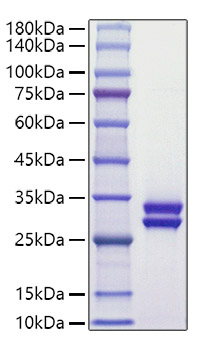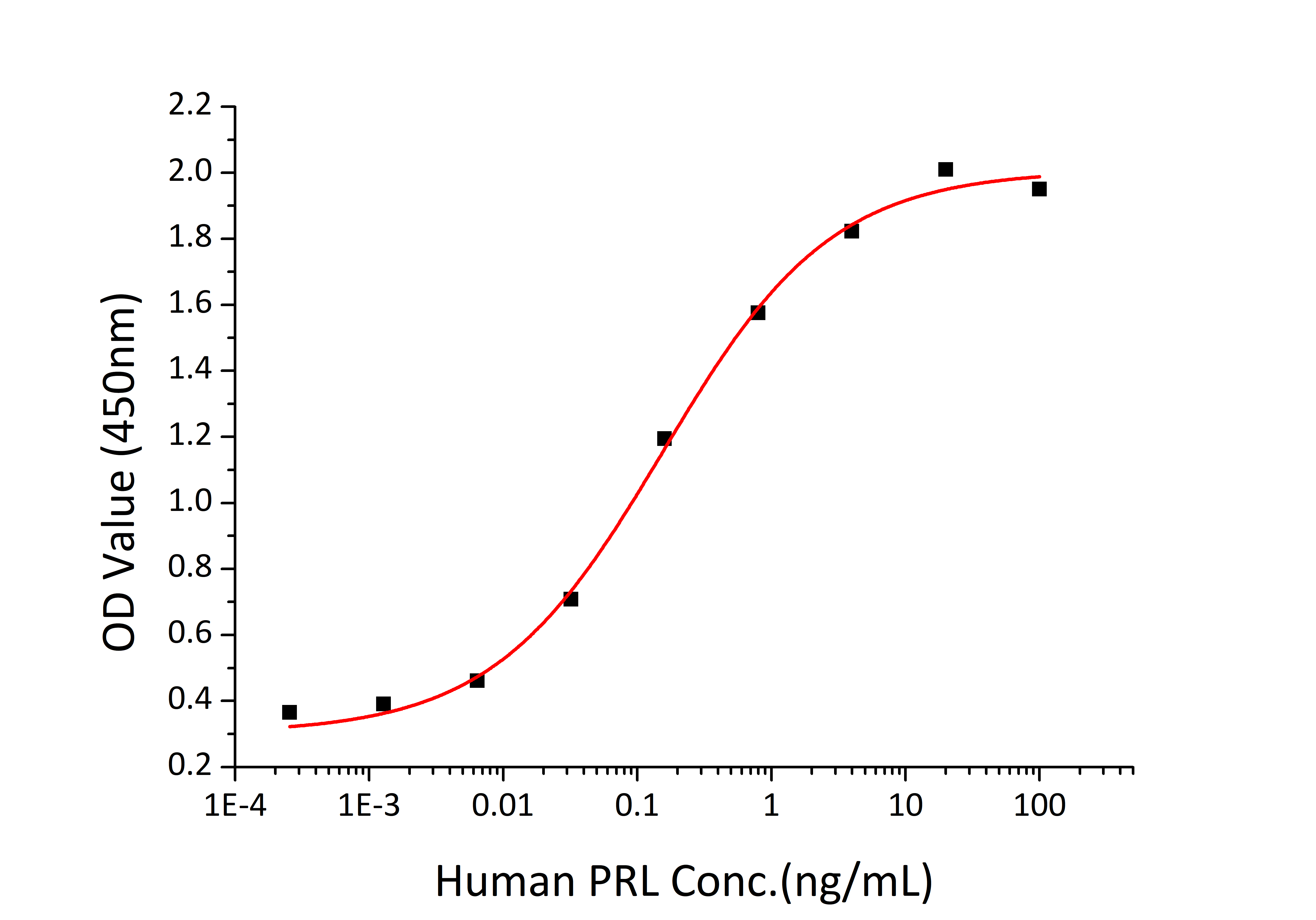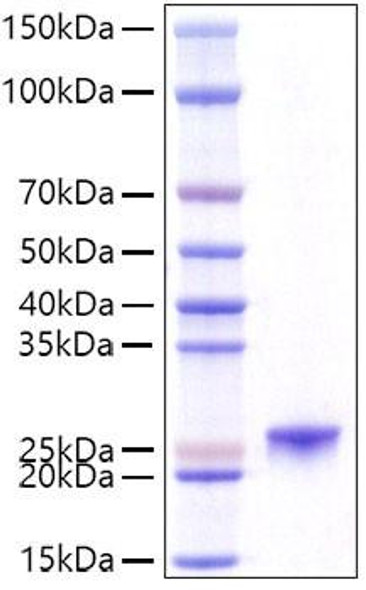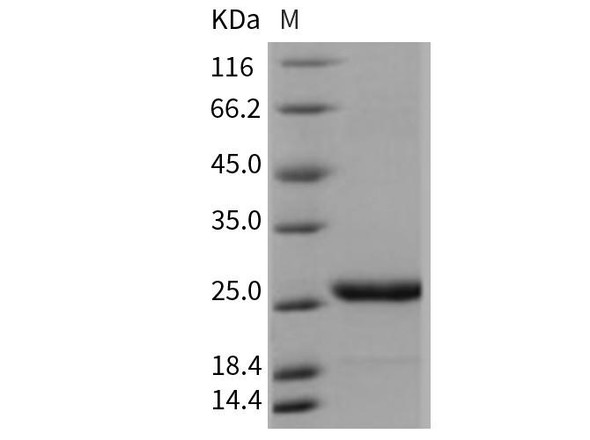Description
Recombinant Human Prolactin/PRL Protein
The Recombinant Human Prolactin/PRL Protein is a biologically active recombinant protein that plays a significant role in various cellular processes and signaling pathways in human biology. This protein is widely employed in immunological research, cell biology studies, protein-protein interaction analyses, and therapeutic development, providing researchers with a reliable tool for investigating Prolactin/PRL function and its implications in health and disease.
This product (SKU: RPCB1339) is produced using HEK293 cells and features a C-6His tag for convenient detection and purification. The protein exhibits a calculated molecular weight of 23.74 kDa with an observed molecular weight of 25-35 kDa under denaturing conditions, achieving ≥ 95 % as determined by SDS-PAGE.. Functional bioactivity has been validated through rigorous quality control assays, confirming its suitability for demanding research applications.
Key Features
| High Purity by Affinity Chromatography | |
| Mammalian & Bacterial Expression Systems | |
| High lot-to-lot consistency via strict QC |
| Product Name: | Recombinant Human Prolactin/PRL Protein |
| SKU: | RPCB1339 |
| Size: | 10 μg , 20 μg , 50 μg , 100 μg |
| Reactivity: | Human |
| Synonyms: | GHA1, PRL, PRL, Prolactin, Gha1, Prl1a1, AV290867, PRL |
| Tag: | C-6His |
| Expression Host: | HEK293 cells |
| Calculated MW: | 23.74 kDa |
| Observed MW: | 25-35 kDa |
| Gene ID: | 5617 |
| Protein Description: | High quality, high purity and low endotoxin recombinant Recombinant Human Prolactin/PRL Protein (RPCB1339), tested reactivity in HEK293 cells and has been validated in SDS-PAGE.100% guaranteed. |
| Endotoxin: | < 1 EU/μg of the protein by LAL method. |
| Purity: | ≥ 95 % as determined by SDS-PAGE. |
| Formulation: | Lyophilized from a 0.22 μm filtered solution of PBS, pH 7.4. |
| Bio-Activity: | Recombinant Human Prolactin/PRL Protein promote the proliferation using Nb2-11 cells. The ED50 for this effect is 0.08-0.30 ng/mL, corresponding to a specific activity of 3.33×106~1.25×107 units/mg. |
| Reconstitution: | Centrifuge the vial before opening. Reconstitute to a concentration of 0.1-0.5 mg/mL in sterile distilled water. Avoid vortex or vigorously pipetting the protein. For long term storage, it is recommended to add a carrier protein or stablizer (e.g. 0.1% BSA, 5% HSA, 10% FBS or 5% Trehalose), and aliquot the reconstituted protein solution to minimize free-thaw cycles. |
| Storage: | Store at -20℃.Store the lyophilized protein at -20℃ to -80 ℃ up to 1 year from the date of receipt. After reconstitution, the protein solution is stable at -20℃ for 3 months, at 2-8℃ for up to 1 week. |
Prolactin (PRL) is a hormone with multiple actions in the central nervous system (CNS) spanning from physiology to pathology. PRL exerts different actions through its receptors that can be found in both neurons and glial cells (astrocytes, microglia and oligodendrocytes) of the brain. It is generally believed that in vertebrates, prolactin (PRL) is predominantly synthesized and released by pituitary lactotrophs and plays important roles in many physiological processes via activation of PRL receptor (PRLR), including water and electrolyte balance, reproduction, growth and development, metabolism, immuno-modulation, and behavior.








